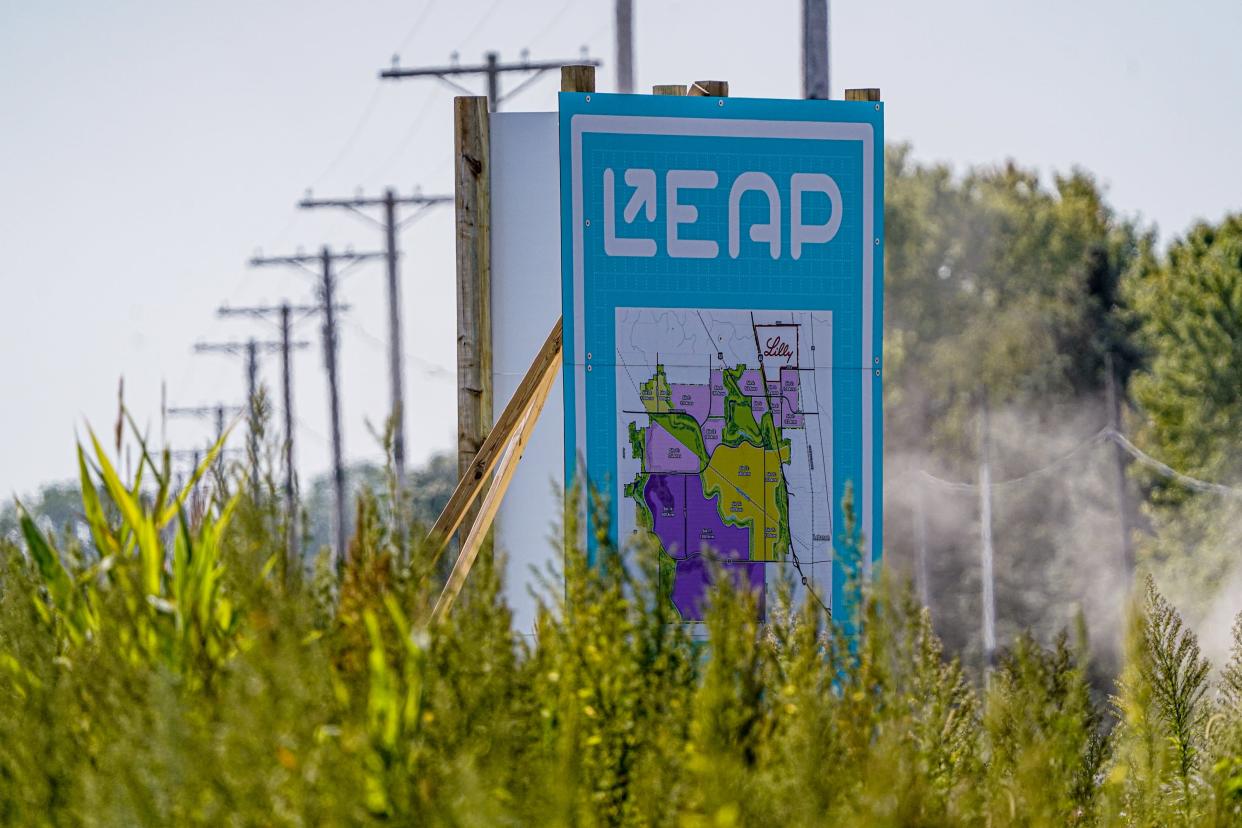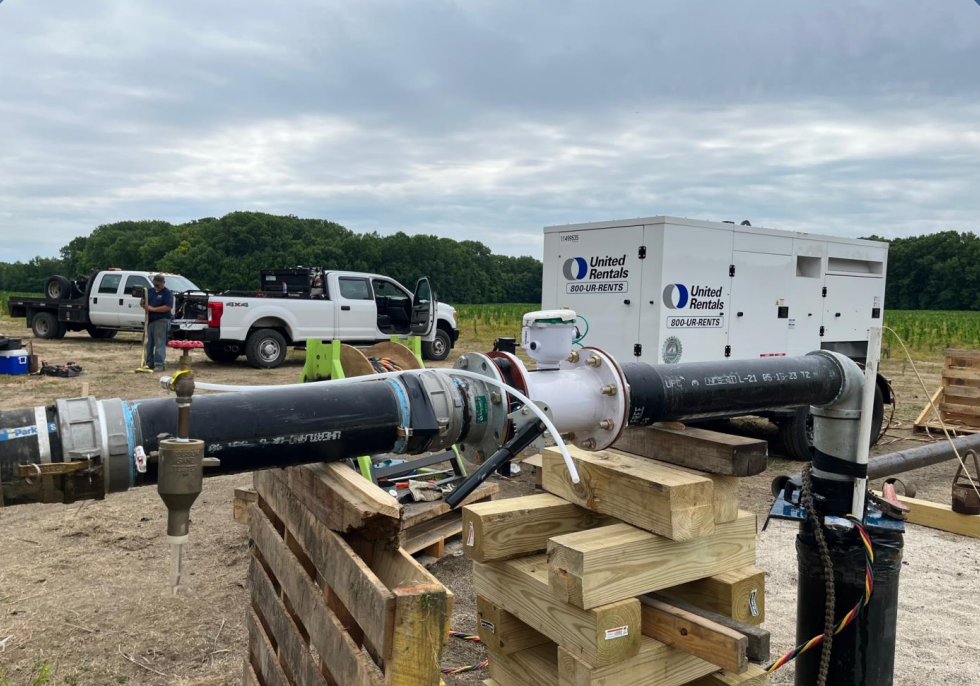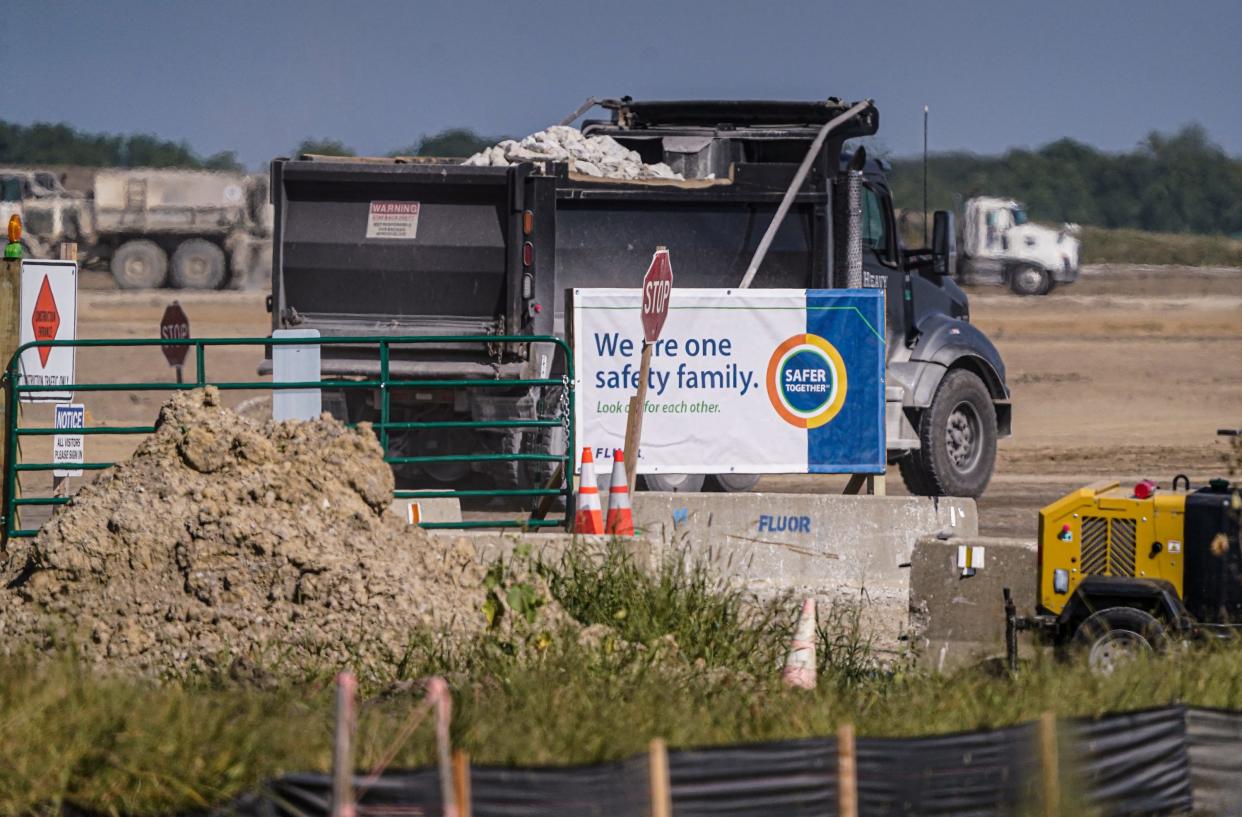Boone County development project threatens Hoosier wallets and water supply, report says
The LEAP District, a multi-billion dollar high-tech manufacturing park in Central Indiana, has had its fair share of time in the spotlight in recent months — today is no exception. A consumer advocacy group released a new report Monday with some big claims: The LEAP project threatens Indiana's water supply and the wallets of Hoosiers.
Concerns around the LEAP project have been constant since earlier this year after Lafayette officials and residents learned of the Indiana Economic Development Corporation's plans to pump tens of millions of gallons a day from the nearby Wabash River aquifer and pipe it nearly 40 miles to the District in Lebanon.
Residents have started a petition to put a stop to the project. Gubernatorial candidates are taking the IEDC to task over its pipeline plans. And a previous IndyStar analysis has raised questions about the state's water policy, or lack thereof.
Today's report from the Citizens Action Coalition, an Indiana consumer advocacy organization, is continuing that scrutiny.
"This project was not well thought out at all," said Grant Smith, who served as a consultant for CAC on this report. "IEDC's arrogant approach to economic development will ultimately diminish water resources, increase costs to ratepayers and foment water wars between communities and regions."
Water scarcity: Water isn't only a Western problem. Here's why some Hoosiers are worried about running out
Equally detrimental, Smith said, is that the IEDC has little accountability and transparency and the public has been entirely cut out of the IEDC's decision-making process. That's why CAC in the report recommended reforming the economic agency — if not abolishing it all together.
The IEDC did not respond to IndyStar's request for comment in time for publication.
The two main issues raised in the report focus around water needs and infrastructure costs.
Leap is incredibly water intensive
The LEAP project is incredibly water intensive. Eli Lilly is the only company that has committed to the project thus far and has already started construction. The other various industries the IEDC is looking to attract to the District ― microchip manufacturer, data center — require tremendous amounts of water in their processes.
If each of these firms committed to coming, according to CAC, the amount of water used on a daily basis could be as much as early 55 million gallons a day — that's the average water use of roughly 737,000 Hoosiers. That does not include water that will be needed for new housing being built.

IEDC hopes to attract even more businesses, which could send LEAP's daily water needs to nearly 100 million gallons per day. Lafayette, by comparison, withdraws between 10 to 17 million gallons each day.
LEAP's water needs are so intense that two pipelines have been proposed to support it: One from Lafayette and one from Indianapolis.
A major reason for concern, according to the CAC report, is that the IEDC committed to the LEAP District and its water-intensive industries without having studied the potential impacts and if water resources can support it. It began studying the Wabash aquifers only after starting to move forward with the project.
Broad regional studies have identified future water shortage concerns in the central Indiana region. However, the IEDC released in October its preliminary findings. Those results show wells near the site could sustainably pump 30 million gallons a day and have minimal impact on nearby homeowners.
But according to local sources, several days after the water testing was complete, some residents reported sulfurous water and gravel in their wells. None of these residents experienced such issues prior to the test drilling, according to the report. These impacts were not included in the IEDC's report.

Tippecanoe County, where the Wabash aquifers are, is one of the fastest growing in the state. CAC in its report raises serious concerns that IEDC's water plans does not consider future water needs: growing population, development downstream, or increase in irrigation. And a lack of comprehensive water policy across the state leaves Indiana's water future hanging in the balance.
This "begs the question: Who will get water during times of water scarcity?" the report reads. "Tippecanoe County residents and farmers and users downstream, or big business at LEAP?"
Who will pay for infrastructure?
Another major consideration outlined in the report is who will be footing the bill.
CAC said that it quickly became apparent to them that the scale of this project could have significant financial impacts and risks to utility ratepayers — both water but also electric and gas. Even more, Hoosier taxpayers were at risk because of the financial commitments already made by the IEDC and "the likely need that the IEDC would have to come back to the well for more."
The IEDC has already committed roughly $972 million in taxpayer dollars so far, according to the CAC report. Much of that is in land purchases, various subsidies, pipeline design, the water study and infrastructure improvements to things such as roads.
Negotiations with Citizens Energy on its proposed pipeline have fallen apart, and CAC speculates its because of money. Citizens did not immediately respond to IndyStar's request for comment, but had previously indicated to the paper the importance of the pipeline's cost not being passed along to ratepayers. With these discussion no longer in action, it's unclear what this will mean for Lebanon's water supply and resources needed for the Eli Lilly facilities under construction.

There are several other logistical and financial questions relating to the LEAP project. First, who is going to pay for and maintain the pipeline infrastructure — will that fall on water utilities and their ratepayers, even if the water is being sent elsewhere?
Also, the LEAP District will take a tremendous amount of electricity and gas. Similarly, who will be responsible for building and paying for that infrastructure?
And lastly, where will the thousands of tons of hazardous waste and billions of gallons of wastewater used every year be sent? And again, who will be responsible for the construction, maintenance and funding of that infrastructure?
The answer to all these questions, CAC worries, is that ratepayers of the various utilities will be captive to paying for it and other Hoosier taxpayers will be left to make up the rest.
Given all these concerns and lingering questions, particularly those around water, Gov. Eric Holcomb's office has ordered that oversight of the water study be shifted from the IEDC to the Indiana Finance Authority.
LEAP project: What Indiana governor candidates have to say about water pipeline plan to Boone County
The CAC report says that "the saga of the LEAP project reveals many troublesome issues with respect to state economic development and water policy." As a result the report recommends putting the project on hold until reliable water studies can be completed so Hoosiers can be confident the District will not impair water resources.
The consumer advocacy group also believes that the companies that commit to the District should pay for a portion of the water and other infrastructure needed to meet their needs. Several steps also focus on developing a comprehensive water management strategy for the state and better understanding all the current and future water needs across Indiana.
This story will be updated once we receive feedback from interested parties.
Call IndyStar reporter Sarah Bowman at 317-444-6129 or email at sarah.bowman@indystar.com. Follow her on Twitter and Facebook: @IndyStarSarah. Connect with IndyStar’s environmental reporters: Join The Scrub on Facebook.
IndyStar's environmental reporting project is made possible through the generous support of the nonprofit Nina Mason Pulliam Charitable Trust.
This article originally appeared on Indianapolis Star: Report: Boone County water pipeline threatens Hoosier wallets, waters
